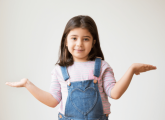It sounds simple, but pairing favourite books with linked resources can supercharge children’s learning at home – and any early years setting can do it, says Maria Kay…
Sending home a ‘story bag’ is a fabulous way to link home and nursery activities. At St Thomas’ nursery in Keith, Scotland, staff have made up over 40 exciting bags full of a wide range of educational activities that can be enjoyed by parents and children together at home. The staff at St Thomas’ report that although putting together the bags was initially a time-consuming process, the effort has been well-rewarded, particularly in terms of parental involvement with the nursery – and of course in encouraging focused interaction between parents and children.
You may have heard of ‘story sacks’ – the concept was conceived by Neil Griffiths in 1995 in response to research suggesting that just half the number of children were being read a bedtime story as in their parents’ generation. Story bags are simply a smaller version of the sacks – at St Thomas’, staff chose to use ‘music book bags’, which are slightly larger and stronger than other book bags. Into them are placed a storybook and a wide range of objects and activities. The latter include puzzles, games, toys, videos, music CDs, construction kits, dressing up clothes, and a range of crafts – puppet-making, mask-making and creating scenery, plus colouring, drawing and painting resources. Cooking, number, writing and reading activities are also offered.
Many of the sacks include puppets or soft toys of the characters from the story, which children may put into their own scenes or use to enter their own world of imagination and storytelling.
In addition to the book and activities, the bags contain an evaluation notebook for parents to complete. This gives staff at St Thomas’ an insight into how well received the activities were – and feedback has been very positive.
Comments from the children and nursery staff are also recorded.
Story bags have much to recommend them. Their multisensory nature makes them visually and physically appealing – and the combination of much-loved stories and associated activities creates an ideal learning environment, in which children are relaxed, engaged and can be active and integral to a story, rather than passive observers. At St Thomas’, each child is allowed to take a bag home for a week. A favourite bag is without doubt that containing Julia Donaldson’s The Gruffalo. Accompanying the book is a range of puppets from The Puppet Company, which were very reasonably priced. Also included is a ‘Gruffalo – spot the difference’ activity sheet. Other favourites tales include Monkey Do by Allan Ahlberg and André Amsutz.
The benefits of the story bags are far-reaching; children are encouraged to enter into the story through the accompanying activities. This enables them to feel from another’s point of view. It also helps to promote skills in emotional literacy, encouraging children to explore their own thoughts and feelings. Storytelling, of course, also helps to encourage speaking skills and increases vocabulary; it helps children to learn about the world, either theirs or the worlds of others. Stories can be ‘social,’ helping children to learn how to behave in certain circumstances, to learn about dangers – from the road to chemicals in the kitchen – or to learn about what happens at the dentist or the hospital.
A bag containing Topsy and Tim go to the Dentist might include a dentist’s mirror for looking at teeth or a pretend drill, for example. It could include a chart for recording when children clean their teeth and a timer. Picture instructions could be included to help develop independence.
The scope for developing story bags in early years settings is near infinite, and the benefits – such as those achieved at St Thomas’ – speak for themselves.
Maria is the author of Sound Before Symbol: Developing Literacy through Music and Alphabet Book + More: A Sounds and Symbols ‘literacy through music’ book. You can purchase both here.

Questioning – Supporting children to ask and answer
Editors picks
